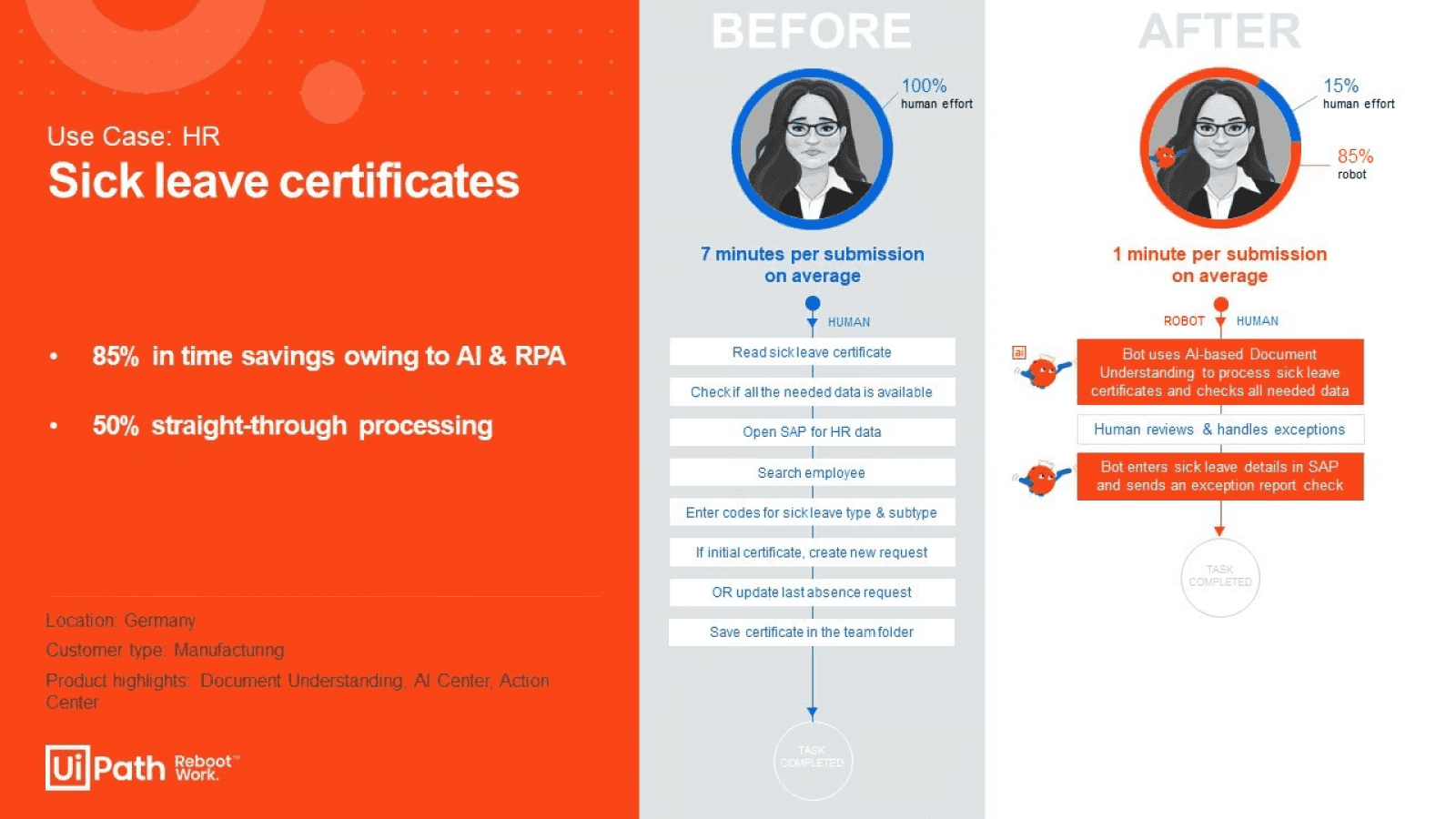Recruiting & hiring
In recruiting, many tasks follow a set of predefined rules and don’t require human judgment, therefore making this HR process optimal for robotic process automation. Once candidate selection criteria are defined, a bot quickly scans hundreds of resumes for the most suitable candidates, shortlisting potentially interesting profiles. Also, RPA can be integrated with applicant tracking systems (ATS) to check rejected candidates who can prove more suitable for future job positions. Bots with OCR capabilities can process scanned CVs and verify digital copies of documents attached to application letters.
What is more, RPA software can assist in scheduling job interviews, sending out meeting invites and, later, offer letters. The solution can either draft custom applicant messages using NLG capabilities or fill in email templates with candidate data.



.jpg)





